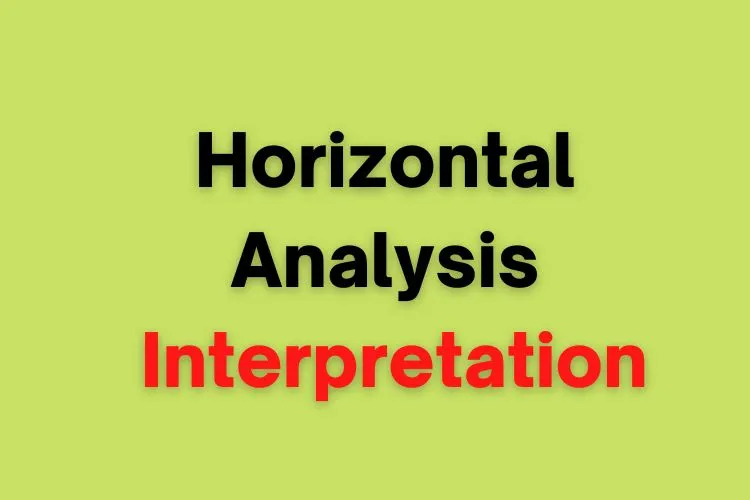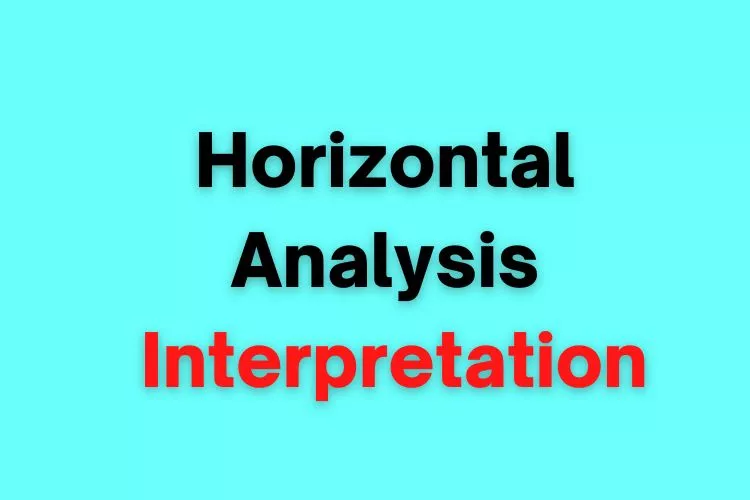Horizontal Analysis Interpretation Formula

The term “horizontal analysis” refers to the practice of comparing and contrasting financial data across multiple periods. It’s a valuable indicator of a company’s growth and financial standing compared to rivals. The development of a corporation can be calculated using the base year and the comparative year in the horizontal analysis method. To arrive at the grand totals, a horizontal analysis compares each line item from the base period to the period of interest. Run a comparative income statement for 2019 and 2020, for instance. You can use Analysis and Analyses to determine if your revenue rose, decreased, or stayed about the same between the two years.
To control whether this is a pattern, it would be helpful to include data from 2018 if possible. It is simple to gauge your development and standing about the competition by comparing your financial records with theirs. Assuring that all financial statements have been prepared following GAAP will guarantee the highest degree of accuracy (GAAP). You are constrained by the consistency required to adhere to the same accounting practices yearly. Statements and records must be compared to those of other companies in the same industry to comply with the comparability constraint. Horizontal analysis helps strengthen and refine financial reporting limitations.
Horizontal Measurement Criteria
The financial statements (balance sheet, income statement, and cash flow statement) that you’ve prepared accurately depict your operations and results. These records can also reveal a company’s strengths and shortcomings using indicators like inventory turnover, profit margin, and return on equity.
For instance, if management determines that a rise in revenue or a fall in the cost of goods sold (COGS) is responsible for improved EPS, the horizontal analysis will corroborate these findings. The horizontal analysis uses cash flow to debt, coverage ratios, interest coverage ratios, and others to ascertain if the company has enough liquidity to meet its obligations. Profitability and growth rates over time can be compared between different businesses in the same sector.

Horizontal Analysis Steps
Start by creating a balance sheet and income statement for each period to be compared. Two is the minimum for a meaningful comparison, but having more than three will make it much simpler to spot patterns.
The next step is to choose a strategy for doing the analysis.
- The Same Thing, Only Different: This method involves drawing parallels between the financial outcomes of two different periods. As an illustration, if in 2019 you brought in $2.5 million and in 2020 you only brought in $2 million, the difference is $500,000. With this strategy, you can easily see the shifts between periods and determine whether or not they are positive.
- Variance: Alternatively, you can determine the impact, positive or negative, by calculating the difference in the two time periods. When an outside party (such as a creditor or investor) needs more information about your business’s financial health, the variance approach is often used.
- Adjustment in Percentage Terms: When the further in-depth investigation is needed, this strategy is ideal. In this method, the first period is a benchmark against which all subsequent periods are measured. The following formula can determine the percentage gain or decrease in income if the difference between 2018 and 2019 is $1 million. Let’s do the math to aim for $6.5 million in 2020 from $5 million in 2018.
$5,000,000 / $1,000,000 = 20%
From last year to this year, your sales are up 20%. The following items are required to make a revenue comparison between 2020 and 2018:
Difference between 2020 and 2018 sales = deviation
The difference between the two numbers is $1,500,000 ( $6,500,000 – $5,000,000 ).
Change / Revenue in 2018 x 100 = Increase / Decrease
Sales will grow 30 percent from 2018 to 2020, or $1.5 million (or 5 million), using the formula: (.3 x 100).
Gross margin and profit margin can also be calculated.
Finally, review your results. Changing periods reveal trends. View variations as percentages or cash values for a complete study. Add columns to your spreadsheet to observe variations and ratios. This format takes longer to generate, but it’s easier to notice trends and compare business performance to last year or quarter. This method compares two years side-by-side.
Consider an investor interested in Company ABC. The investor wants to know how the company grew over the past year to ensure a great ROI. Company ABC’s base year net income was $5 million, and retained earnings were $25 million. Company ABC reported $10 million in net profits and $27 million retained earnings. Net income and retained earnings are up $5 million and $2 million, respectively.
Net income grew 100% (($10 million – $5 million) / $5 million * 100). Retained earnings climbed 8%. (($27M-$25M) / $25M * 100).
Horizontal And Vertical Analysis
The horizontal analysis involves taking a step back and examining trends over a longer time frame, such as many months, quarters, or years. In most cases, it is quarterly or annually, including a look back at the previous three years. One’s ability to recognize patterns increases as more data becomes available.
Vertical analysis, on the other hand, recasts numbers from either the income statement or the balance sheet as a percentage of another metric, such as net sales or total assets (income statement.)
Creditors and investors typically use vertical analysis to compare a company’s financial performance to others in the same industry.
Our blog post compares and contrasts horizontal and vertical analysis in more detail.
Recognizing Patterns
A balance sheet and income statement from a single accounting period won’t reveal the complete story, but financial statements are still crucial for managing your organization. Numerous inquiries can be addressed with the help of horizontal analysis, such as:
Can you provide specifics on the quarterly growth (or decline) in sales? When was it, exactly, that this year ended?
What’s happened to the cost of goods sold? Down?
How widespread is the transformation within the company? Is there an increase or decrease in net income? Which way do you see this?
Horizontal analysis’s other name, trend analysis, is evident once you look at it. You may evaluate how well your company is financially concerned in previous periods. In light of your results, you may make informed decisions about where to focus your efforts and where to make changes.
